How to Run an Application as a Different User in Windows 10
Windows allows you to run applications from your account as a different user account as long as you have the credentials for the other account. This functionality is available in all of the versions of Windows i.e. Windows 7, 8, and 10. While we are covering Windows 10 only in this article, the same instructions can be followed in other versions as well. With the help of this feature, you can not only run applications that have the .exe extension, rather you can execute almost anything and every file extension that you can find. Be it batch files to different installers, you can run them as a different user.
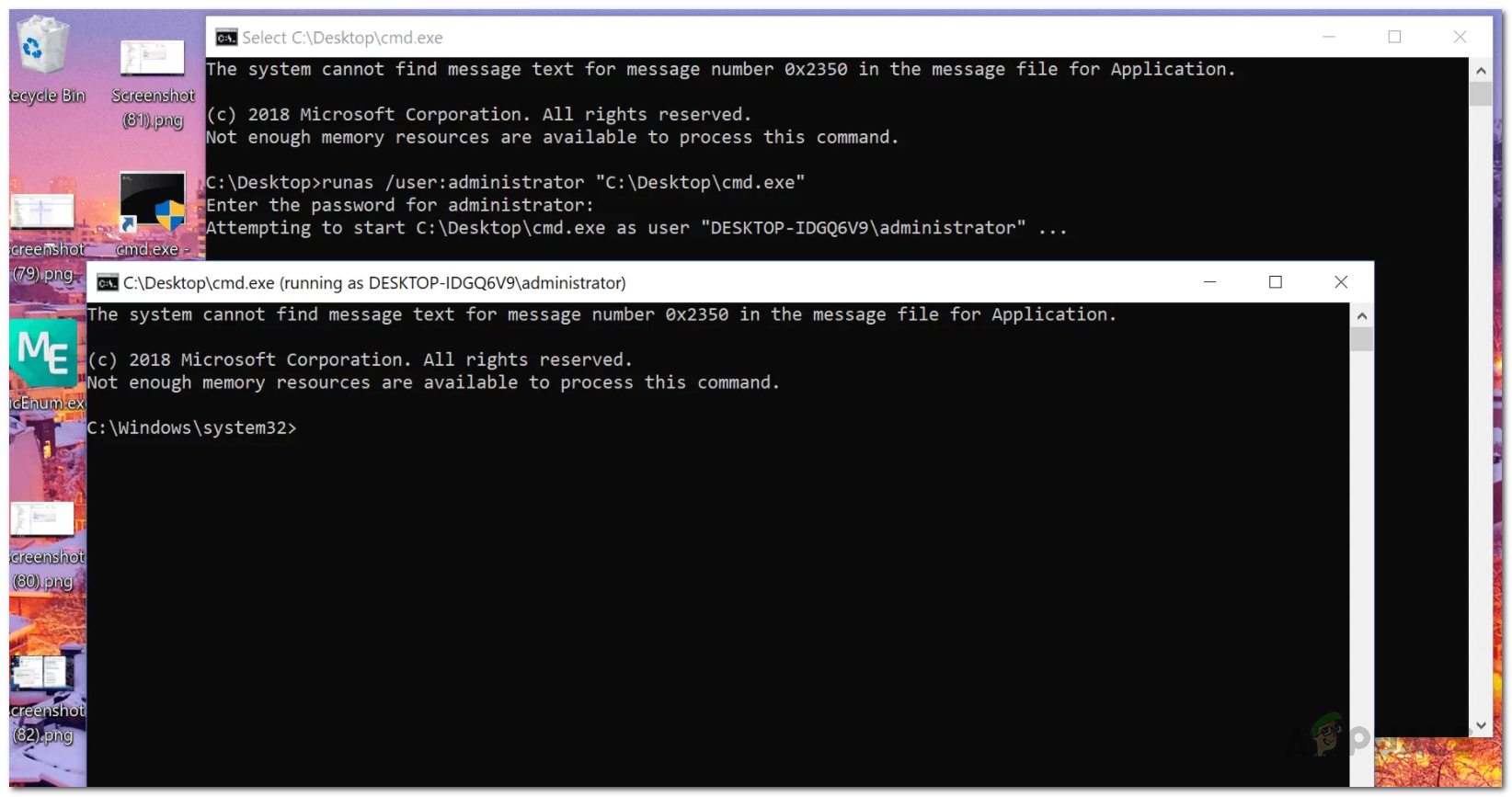
This functionality is enabled by the RunAs program that comes built-in in Windows. The RunAs program is widely used for this purpose. This can be accessed through the command prompt along with the Windows Explorer, so if you prefer a graphical user interface, there is something for you as well. In order to make use of this program, there is a service that needs to be running in the background. The RunAs program depends on the Secondary Log-on service to be able to run various files as a different user. If the service is not running and is stopped, you won’t be able to achieve the intended result. Therefore, make sure that the service is running by looking for it in the Windows Services window.
As it turns out, there are several ways of running an application as a different user. We will be covering various different methods so you can choose to use any that you find easy and quick. With that said, let us get into it.
Method 1: Using the Windows Explorer
One way of running the application as a different user can be achieved through the Windows Explorer. This is rather one of the easiest ways of doing this as this coincides with the normal way of launching a program. Just the way you would launch a program on your current account, you can launch it from a different user account in the same manner. The only difference being you will have to choose a different option instead of double-clicking the application or choosing Open from the drop-down menu.
Now, in some cases, the required option to run a program as a different user may not be available to you in the drop-down menu. That is because of the Windows local policies. In such a case, you simply will have to change a policy in the Local Group Policy Editor window and you should be good to go. For this, follow the instructions down below:
- First of all, we will have to make sure that the “Run as different user” option is visible for you. For that, open up the Run dialog box by pressing the Windows key + R.
- Then, in the Run dialog box, type gpedit.msc and press the Enter key.
- This will open up the Local Group Policy Editor window. There, navigate to the following path:
Computer Configuration > Administrative Templates > Windows Components > Credential User Interface
- Then, on the right-hand pane, double-click on the Required trusted path for credential entry policy.

Credential User Interface Policies - Make sure that it is set to Not Configured. Click Apply and then hit OK.
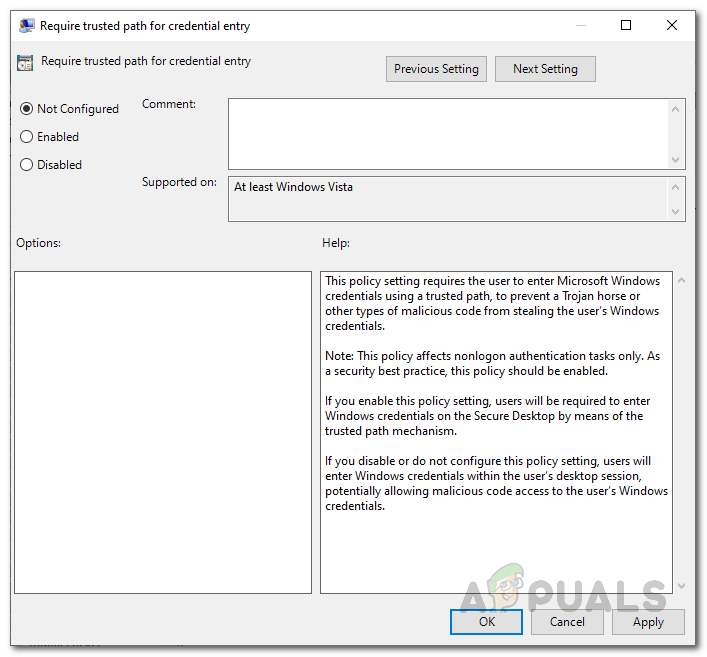
Require Trusted Path for Credential Entry Policy Settings - Once you have done that, navigate to the directory where the application that you wish to run exists.
- Right-click on the application while pressing the Shift key and choose the “Run as different user” option from the drop-down menu.

Running Notepad++ as Different User - After that, provide the username and password of the other user account and click OK. Doing so will run the application as the provided user.
Method 2: Using the Command Prompt
Another way that you can use the RunAs program to run an application as a different user is through the command prompt. The RunAs utility can be used in the command prompt as you would use any other command. With the help of this, you can even create a batch file that will run a certain application for you as a different user every time you run it. To do this, follow the instructions down below:
- First of all, open up the Start Menu and then search for the command prompt to open it up.
- Once the command prompt window launches, enter the following command to run a program as a different user:
runas /user:USERNAME "PathToFile" UserPassword

- Before pressing the Enter key, make sure to replace the USERNAME, PathToFile and UserPassword variables with their respective values.
- Once you have done that, press the Enter key and the program should run as the specified user.
- Additionally, you can create a batch file with the above command so you don’t have to open up the command prompt and enter the command every time you wish to run a program as a different user.
- To do this, create a text document and paste the above command inside the text document.
- After that, save the document as a batch file i.e. with a .bat extension.
- Now, every time you wish to launch the application, just run this .bat file and it’ll do the job for you.
Method 3: Using the Start Menu
Finally, you can also use the notorious Start Menu to run an application as a different user. However, in order to be able to do so, you will have to edit a policy within the Local Group Policy Editor window. Once you have done that, you will be able to see the “Run as different user” option when you right-click on the application in the Start Menu. To do this, follow the instructions down below:
- First of all, open up the Local Group Policy Editor by searching for it in the Start Menu.
- Once you have opened up the editor, make your way to the following path:
User Configuration\Administrative Templates\Start Menu and Taskbar
- There, double-click on the Show “Run as different” command on Start policy on the right-hand pane.
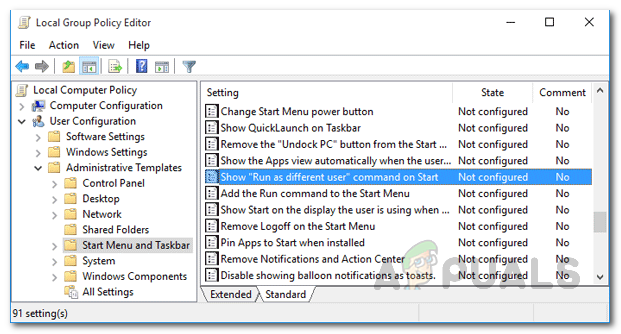
Start Menu Policy - Set the policy to Enabled, click Apply and then hit OK.
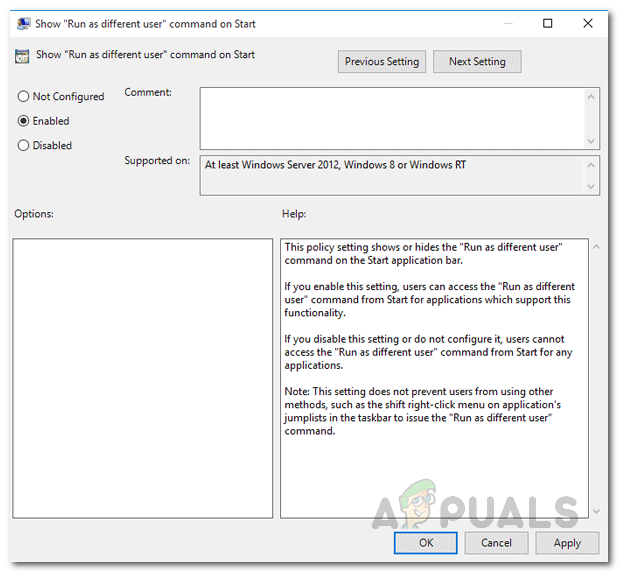
Editing Start Menu Policy Settings - After doing that, go ahead and reboot your system so that the changes take effect.
- Once your PC boots up, search for an application in the Start Menu and then right-click on it. You should be able to see the “Run as a different user” option in the drop-down menu.
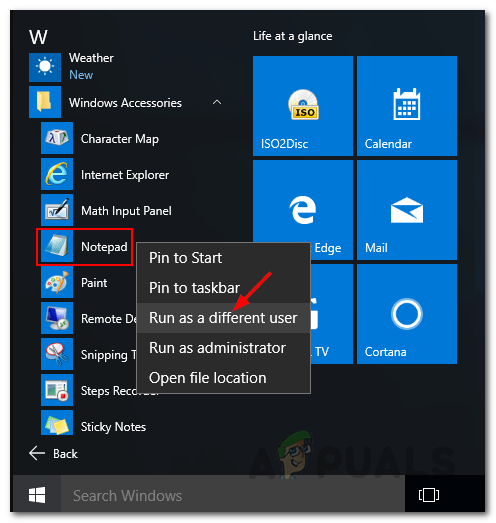
Start Menu – Run as Different User





